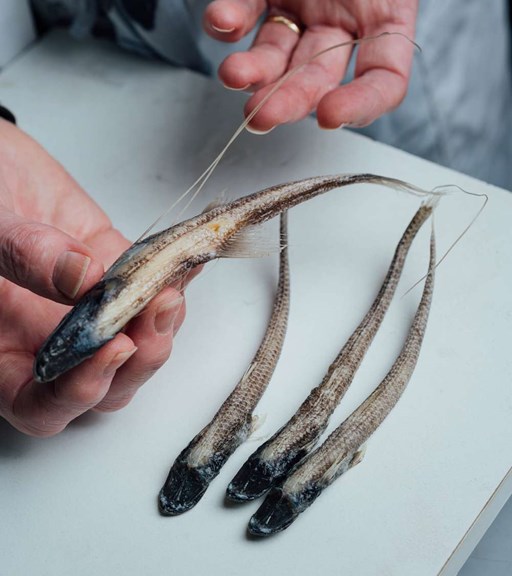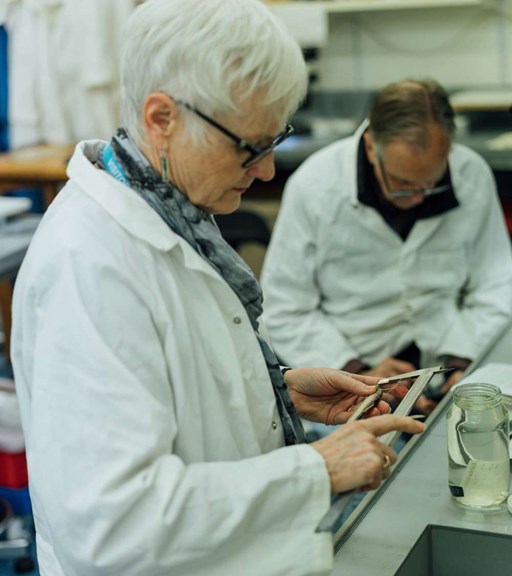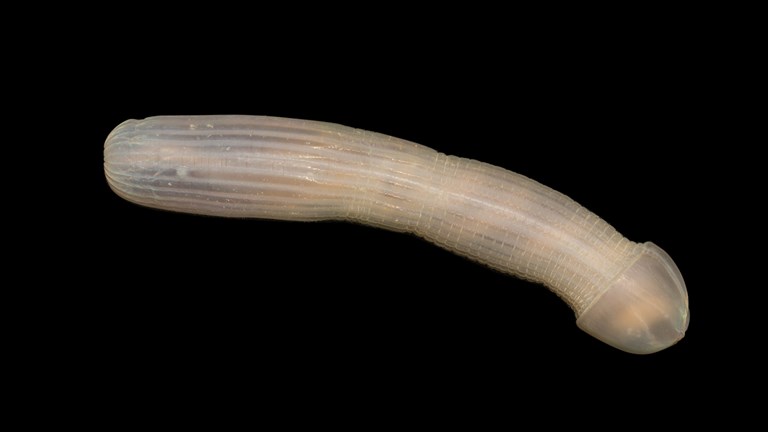Putting names to faceless fishes from the abyss
Scientists are gathered at our Australian National Fish Collection in Hobart this week to identify mysterious fishes collected aboard research vessel Investigator during a voyage to sample the deep ocean abyss last year.
Led by Museums Victoria, the Sampling the Abyss voyage was the first ever survey to explore marine biodiversity in the abyssal waters off the east coast of Australia. Understanding which fish species occur where, and discovering new fish species, is the starting point to managing marine biodiversity.
The voyage made some unusual and important discoveries, and led to more than a few fishes becoming ‘internet famous’.
Top of the list was the rediscovery of the faceless fish, a deep sea fish with no visible eyes and a mouth on the underside of its head. This species led the charge of bizarre creatures that rose from the dark, crushing depths of the abyss.
Other mysterious creatures discovered in the deep included at least three new Australian records of gelatinous cusk eels (family Bythitidae); blob fishes, cousins of Mr Blobby who was voted the World’s Ugliest Fish in 2013; bioluminescent cookie-cutter sharks; a haul of frightening lizard fish; and graceful tripod fish, which prop on the sea floor on their long fins waiting for food to drift within reach.
The abyss is the largest and deepest habitat on the planet, covering half the world’s oceans and one third of Australia’s territory, but is the least explored area on Earth.
Aboard RV Investigator, researchers used a beam trawl and other equipment to collect these fishes from depths down to nearly 5km, which is a new capability for an Australian research vessel. In this line of work, scientists play the long game - it can take up to three hours or more to lower equipment to such depths! After an hour on the sea floor, the catch is hauled onto the deck, sorted and taken to labs on board Investigator for processing.
Scientists then spend many more hours on board processing the catch, separating different species, photographing specimens to record their colours, extracting muscle samples for DNA analysis, preserving specimens in formalin then ethanol, or freezing some of the catch for later processing.
And this is just the beginning of the journey for many of the specimens!
At the workshop this week, scientists from Museums Victoria and CSIRO are using a mix of morphological and molecular approaches to identify the species of fishes collected, because deep water species are typically poorly known to science. They expect to tally nearly 100 different species, and possibly some that are new to science.
The task of identifying these fishes will be an international effort, with specimens from this voyage already being sent to scientists in Denmark who specialise in abyssal fishes. They will compare specimens from different ocean basins to determine if the fishes collected during the voyage are new species
This frontier science to the edges of our known world is vital for increasing our understanding of the deep sea environment.
Specimens from the voyage have been shared between five Australian collections (Museums Victoria, Australian Museum, Queensland Museum, Tasmanian Museum & Art Gallery and CSIRO Australian National Fish Collection), and are available to the international research community for loan and study. It is anticipated that new discoveries will continue to be made from collected samples for decades.
Led by Museums Victoria, Sampling the Abyss was a month-long voyage on the Marine National Facility research vessel Investigator bringing together scientists from Museums Victoria, CSIRO and other Australian and international museums and research agencies. The vesssel departed Bell Bay (Launceston, Tasmania) on 15 May 2017 and visited seven Commonwealth Marine Reserves (CMR) – from the Freycinet CMR off eastern Tasmania to the Coral Sea CMR off central Queensland – before finishing in Brisbane on 16 June 2017.












